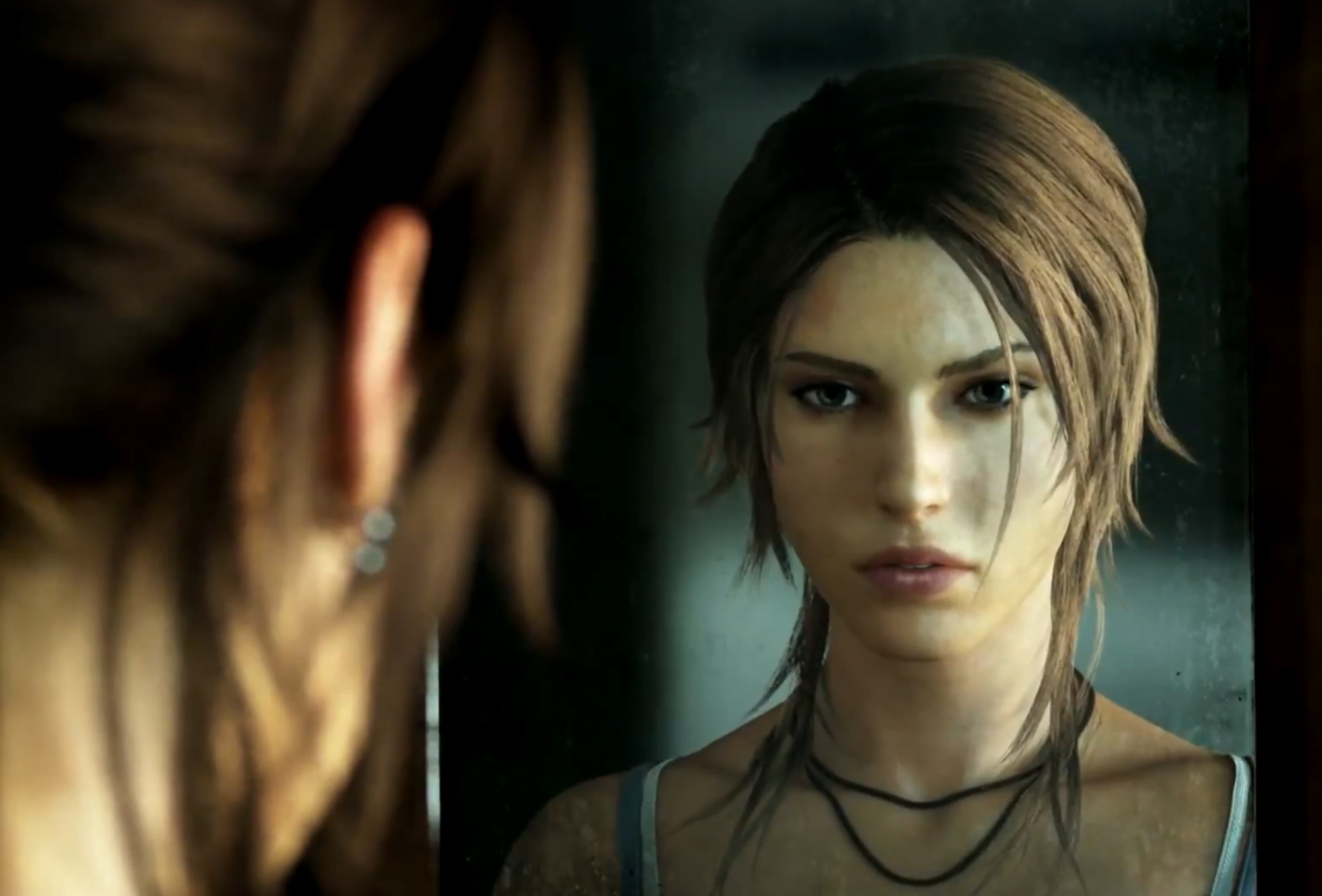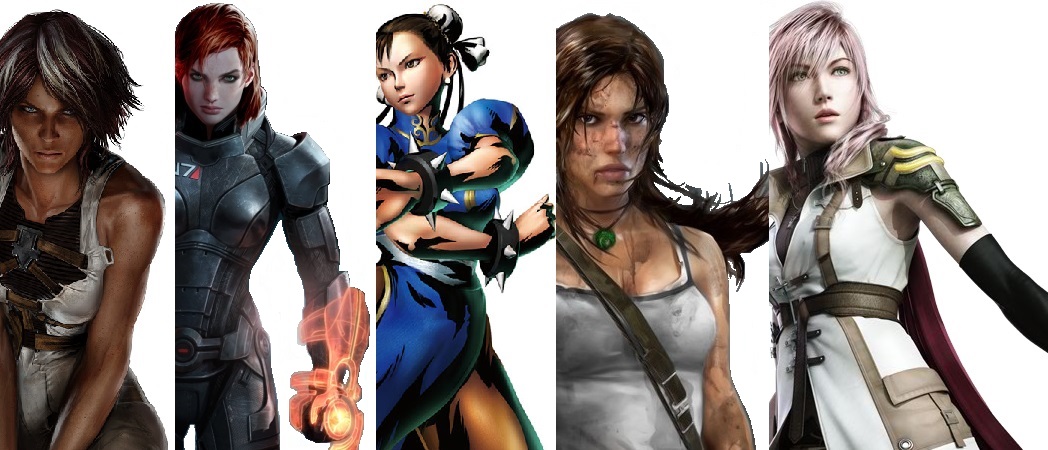I recently read an essay by Ann Friedman entitled “On Being a Badass,” in which Friedman explores what it means for women to be considered badasses in today’s corporate landscape. As Friedman explains, the term badass generally seems to imply “both toughness and disaffectedness. It’s rare to look at someone whose chief qualities are measured thoughtfulness and open emotionality and declare her a total badass. As women carve out careers and comfortably adopt traits that were once considered ‘masculine,’ there’s strong social pressure on them to mimic the stoicism that men have traditionally been expected to maintain in the face of hardship.” While Friedman discusses the implications of the term badass within a more career-oriented context, her essay got me thinking about the manner in which badass women are constructed in our narratives as well.
I suppose this line of thinking was especially instigated by my viewing of Mad Max: Fury Road earlier this week. While I don’t want to go into an in-depth analysis of the film because such a discussion has already occurred on this site, I do at least want to say that, as I watched the events of the film unfold on the movie screen, and as I specifically witnessed the manner in which Charlize Theron’s Imperator Furiosa played a part in these events, I found myself wondering—what does it really mean for a woman to be a badass? How does the manner in which a woman’s badassery is represented speak to inscriptions of gender and gender roles? And how are such inscriptions made manifest not just in the films we watch but also, in keeping with the general focus of this site, in the games we play?
 So, to return to Friedman’s characterization of the badass, it would seem that the defining characteristics involved in designating one as such would include a certain level of toughness, implacability, resilience, composedness, and fortitude. Sure, such a characterization, you may be thinking, might be only one definition of what it takes to be considered a badass, but let’s, for the sake of argument, stick with Friedman on this, especially since such a characterization seems to be fairly prevalent, narratively-speaking, in the manner in which male characters are depicted. Indeed, the disaffectedly tough (male) badass seems to span multiple genres—from the sun-chapped cowboys of western texts to the hard-bodied heroes of action films, from the secret agents of spy novels to the hardboiled detectives of film noir. We’re talking your Clint Eastwoods, Sly Stallones, Sean Connerys, and Humphrey Bogarts. But Furiosa could also be numbered among these, for she, too, is relatively terse, single-minded, and able to both give and take a substantial beating. So I wonder—what happens when the badass is a woman, when such a woman embodies normatively masculine values?
So, to return to Friedman’s characterization of the badass, it would seem that the defining characteristics involved in designating one as such would include a certain level of toughness, implacability, resilience, composedness, and fortitude. Sure, such a characterization, you may be thinking, might be only one definition of what it takes to be considered a badass, but let’s, for the sake of argument, stick with Friedman on this, especially since such a characterization seems to be fairly prevalent, narratively-speaking, in the manner in which male characters are depicted. Indeed, the disaffectedly tough (male) badass seems to span multiple genres—from the sun-chapped cowboys of western texts to the hard-bodied heroes of action films, from the secret agents of spy novels to the hardboiled detectives of film noir. We’re talking your Clint Eastwoods, Sly Stallones, Sean Connerys, and Humphrey Bogarts. But Furiosa could also be numbered among these, for she, too, is relatively terse, single-minded, and able to both give and take a substantial beating. So I wonder—what happens when the badass is a woman, when such a woman embodies normatively masculine values?
Such a question brings to mind Jack Halberstam’s discussion of female masculinity, in which Halberstam explores female masculinity as a type of alternative masculinity that allows us to think critically about what types of male-ness and masculinity are privileged and what types are subordinated. Such a question also brings to mind Judith Butler’s examination of gender performativity as well as her call for the enacting of gender trouble—a call for the troubling of the boundaries of gender roles through the performance of alternative or subversive bodily acts. Perhaps Furiosa’s masculine-tinged badassery can be considered to be an example of such gender trouble, especially considering the fact that her transgressive embodiment of badass heroism allows her to help bring down the tyrannical patriarchy of Immortan Joe. Perhaps, then, we might begin to conceive of badass female characters as able to subvert the primacy of the masculinity of male badasses, as able to establish representations of alternative manifestations of gender and identity, as able to challenge normative conceptions of what it means to be a man and what it means to be a woman.
Or maybe it’s a little more complicated than that.
As Friedman points out, “It’s almost scary to realize how deeply many women — especially those who are pushing the boundaries of what’s traditionally been considered feminine — have internalized the message that toughness and feelings don’t go together…There’s pressure to prove that you’re just as capable as men are, which can turn into pressure to ignore your emotional responses and downplay the tendencies you have that are traditionally considered ‘feminine.’” Extending Friedman’s opinion regarding the potential problems with women’s aspirations toward conventional badassery, the following question comes to mind—could the representation of capable, badass women potentially serve, instead, to reify and reinforce gender roles (i.e. emotionality and vulnerability as feminine and stoicism and toughness as masculine)? To put this another way, does the fact that a female character like Furiosa embodies so-called masculine values in the construction of her badassery perpetuate the idea that one must be masculine in order to be badass?
 The double-edged sword inherent in such a line of questioning doesn’t seem to be the only complication for fictional female badasses, and it seems prudent at this point to turn to the realm of video games in order to expand on these other ramifications. Lara Croft seems the most obvious exemplar, for she seems to be fairly consistently rendered as exceedingly capable (both physically and intellectually), no-nonsense, tough, and tenacious. But Croft’s badassery seems also fairly consistently to be fetishized and sexualized through the manner in which her female form (see also: ample bust line) is represented. Even in Croft’s most recent incarnation in the latest Tomb Raider, her gendered difference is noted; even though her clothing and breast size are toned down, she does find herself on the receiving end of a moment of sexualized violence. While this moment is brief, it nonetheless seems to highlight the fact that Croft’s brand of badassery is specifically female in nature, for on top of the different forms of violence with which male heroes are confronted, Croft, as a woman, must persevere through and transcend sexual violence as well. In this way, it would seem that badass female characters like Croft, while potentially both subverting and perpetuating the idea of masculinity-as-heroism at the same time, may also potentially face obstacles or limits in being rendered badass in the same way that male characters are.
The double-edged sword inherent in such a line of questioning doesn’t seem to be the only complication for fictional female badasses, and it seems prudent at this point to turn to the realm of video games in order to expand on these other ramifications. Lara Croft seems the most obvious exemplar, for she seems to be fairly consistently rendered as exceedingly capable (both physically and intellectually), no-nonsense, tough, and tenacious. But Croft’s badassery seems also fairly consistently to be fetishized and sexualized through the manner in which her female form (see also: ample bust line) is represented. Even in Croft’s most recent incarnation in the latest Tomb Raider, her gendered difference is noted; even though her clothing and breast size are toned down, she does find herself on the receiving end of a moment of sexualized violence. While this moment is brief, it nonetheless seems to highlight the fact that Croft’s brand of badassery is specifically female in nature, for on top of the different forms of violence with which male heroes are confronted, Croft, as a woman, must persevere through and transcend sexual violence as well. In this way, it would seem that badass female characters like Croft, while potentially both subverting and perpetuating the idea of masculinity-as-heroism at the same time, may also potentially face obstacles or limits in being rendered badass in the same way that male characters are.
Now, don’t get me wrong—I’m (obviously) not saying that I think we shouldn’t have the opportunity to play badass female characters. I’m not saying that such characters shouldn’t exist. I’m also not saying that all female characters should embody either entirely traditional feminine traits or entirely traditional masculine traits. Such arguments would be an oversimplification of the situation and would continue to rely on binaristic constructions of gender.
I’m not even saying that I hands down hate the latest Tomb Raider. Maybe the game is actually a step in the right direction because it at least attempts to depict Croft in more complex ways (whether or not these attempts are successful is perhaps a discussion for a later date). But to say that the game has no flaws at all would also seem disingenuous and would seem to imply that the addition of long pants and the reduction of breast size are adequate-enough benchmarks for more equal gender representations in video games. And I’m not saying that either.
What I am trying to point out is the fact that the narrative construction of the badass in both its female and male iterations is pretty complicated and has broader implications for the manner in which we think about gender, gender roles, and the characters we play—and I don’t know that there is one definitively right way of thinking about any of this. Maybe it’s the thinking about it at all that matters.





One thought on “Woman as Badass: On Female Masculinity and the Gendering of Heroism in Video Games (and Beyond)”
Some thirty-five years ago when Georgeo Armani strips Richard Gere’s jacket of the traditional male-upper-body-strength shoulder stuffing and Evan Picone takes that leftover masculine padding, transferring it to her iconic double breasted suit defining the then emerging badass business woman, the movie Mad Max introduces us to a young Mel Gibson, a dystopian outback, cars that guzzle gas like frat boys drink bad beer, and a plot of the anti-hero male as savior to mankind.
Fast forward three and a half decades later, in a remake of Mad Max, Charleze Theron, a bio-mechanical Harriet Tubman like anti-hero emerges as savior to womankind, in a dystopian outback filled with cars that, you guessed it, guzzle gas like frat boys drink bad beer.
In the gulf of the 3.5 decades between Mad Maxes, badass as defined in the 80’s business world by a gender blurring of costume, or in the present picture as Ms. Theron’s mechanical leverage (traditionally defined as a masculine trait) still struggles with female strength in the shadow of a masculine tradition of brute muscle and the scraping of knuckles on the pavement of progress.
To this author, badass in the present can be found in The film Wreck-it Ralph and in Ms Jane Lynch in her interpretation of backstory PTSD scarred Sargent Tamara Jean Calhoun, who finds true love in the diminutive Fix-it Felix Jr., proving that it is the package itself and not the size of the package that matters.
Oh, and as for Mel Gibson, no doubt, bad beer!